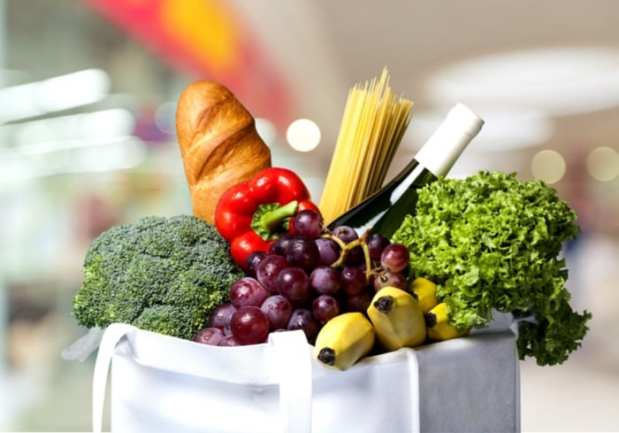Grocers’ In-Store Innovations For Boosting Consumer Spend

For many consumers, trips to the grocery store are a routine part of their everyday lives. In deciding where to shop, these customers value cost, convenience and choice: They want to be able to find the fresh staples they need in stores near their homes. However, all of these trips add up – and they comprise a sizeable part of their budgets.
According to the PYMNTS Enterprise Grocery Report, almost $20,000 of the $56,697 per year of the average spending of households in the United States corresponds with food or similar products. Moreover, food-at-home accounts for 20 percent of spending for consumers between the ages of 25 and 34.
To capture this spending, grocers are driving innovation through their brick-and-mortar stores with delivery and pickup efforts (among other initiatives). These are some of the ways that retailers from Walmart to Publix – as well as Kroger, Albertson’s and ALDI – are bringing grocery shoppers through their doors or other sales channels.
Almost a quarter — or 24 percent — of customers in the survey sample preferred Walmart. The retailer has been making inroads with grocery delivery, having announced in September that it is now offering the service in 50 metropolitan areas across the country. At the time, the retailer said the 50th metro area for grocery delivery was in Akron, Ohio and that more locations were on the way. In addition, Walmart said it had started to receive orders for grocery pickup at its 2,000th location for the service. It was reported at the time that the company had forecasted having 140 access points in 430 markets, and covering 69 percent of U.S. households at the end of its fiscal year. To fill those orders promptly, Walmart announced the prior month that it planned to test robots for online grocery orders.
Nearly two in 10 — or 17 percent — of customers in the survey sample preferred Kroger. The grocer is testing connected devices with the help of Microsoft at two stores, one in Ohio and one in Washington. It seeks to bring new customer experiences to market faster, help store associates become more productive and drive personalization with insights with the effort, which comes amid the grocer’s digital push through its data-driven Restock Kroger initiative. In a joint statement with Microsoft, Kroger Chairman and CEO Rodney McMullen said, “Kroger is building a seamless ecosystem driven by data and technology to provide our customers with personalized food inspiration. We are identifying partners through Restock Kroger, who will help us reinvent the customer experience and create new profit streams that will also accelerate our core business growth.”
Almost one in 10 — or 7.8 percent — of customers in the survey sample preferred Albertson’s. The retailer was said to be teaming up with Takeoff Technologies for a trial partnership to assemble product baskets for delivery orders. Through the arrangement, Albertsons planned to stock products that customers like for online orders in selected areas, instead of having staff members manually pick and pack items for delivery orders. It was previously reported that stores are designed for customers’ shopping patterns instead of the efficiency of completing a basket, but Takeoff Technologies only takes up only a small sliver of a brick-and-mortar location – about one-eighth of the space.
More than six percent — or 6.1 percent — of customers in the survey sample preferred Publix. The grocer opened a concept called GreenWise Market last year. The goal of the store was to grow the definition of a grocery experience. Some of that strategy was focused around selection: Consumers can choose from a range of organic, all-natural and locally sourced options. The grocer was also creating a “hang-out” zone, where shoppers can pick up prepared food offerings, such as burrito bowls, sushi, smoked wings and Mediterranean pizza. In addition, it was reported that the concept would have touchpoints for food- and beverage-themed events, like cheese and wine tastings.
A slightly smaller share — 5.9 percent —of customers in the survey sample preferred ALDI. The grocer, it was reported in March, planned to test-drive groceries at up to 10 Kohl’s department stores. That news came as Kohl’s was looking to bring traffic to its stores. As Chief Executive Kevin Mansell said in an earnings call, “we’re focused on traffic-driving retailers. Groceries, supermarket chains — they drive a lot of traffic.” In December, it was reported that ALDI was coming to a renovated Kohl’s space in Texas, but that “it’s unknown when the remodel will be complete.” The company also announced last year that it planned to bring online grocery delivery to all of its United States stores.
ALDI, Kroger and Walmart, among other retailers, are driving innovation in their stores and online platforms to bring in customers, in an effort to capture customer loyalty and stay relevant in an increasingly competitive industry.
